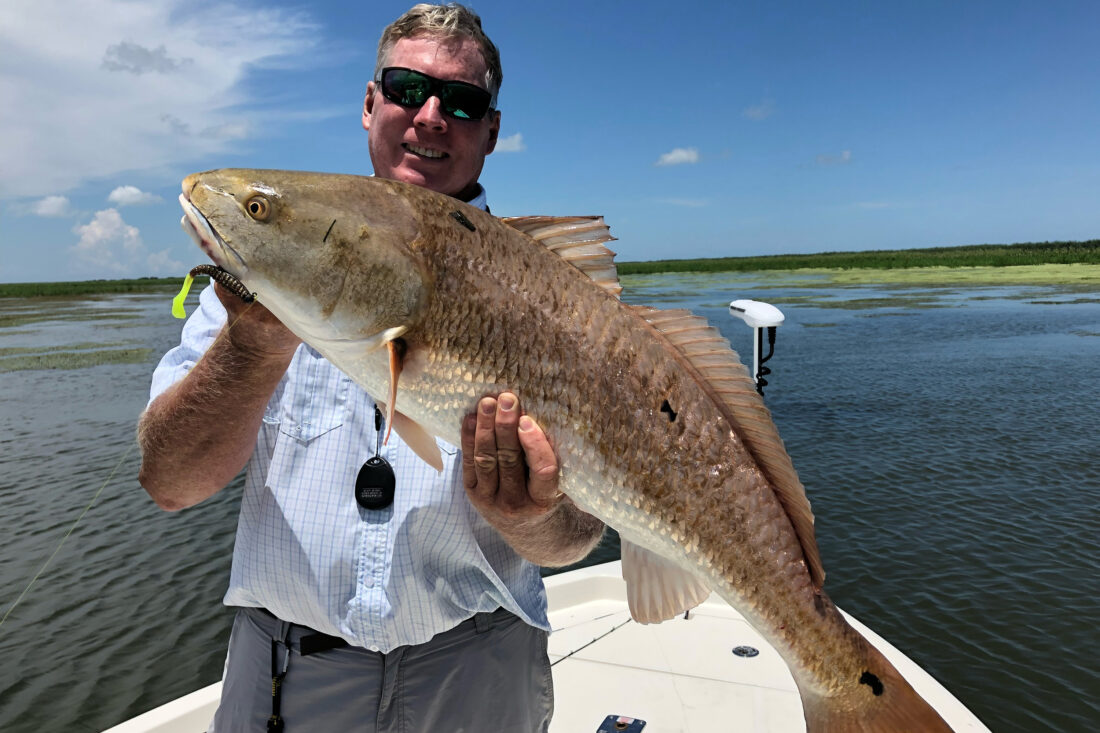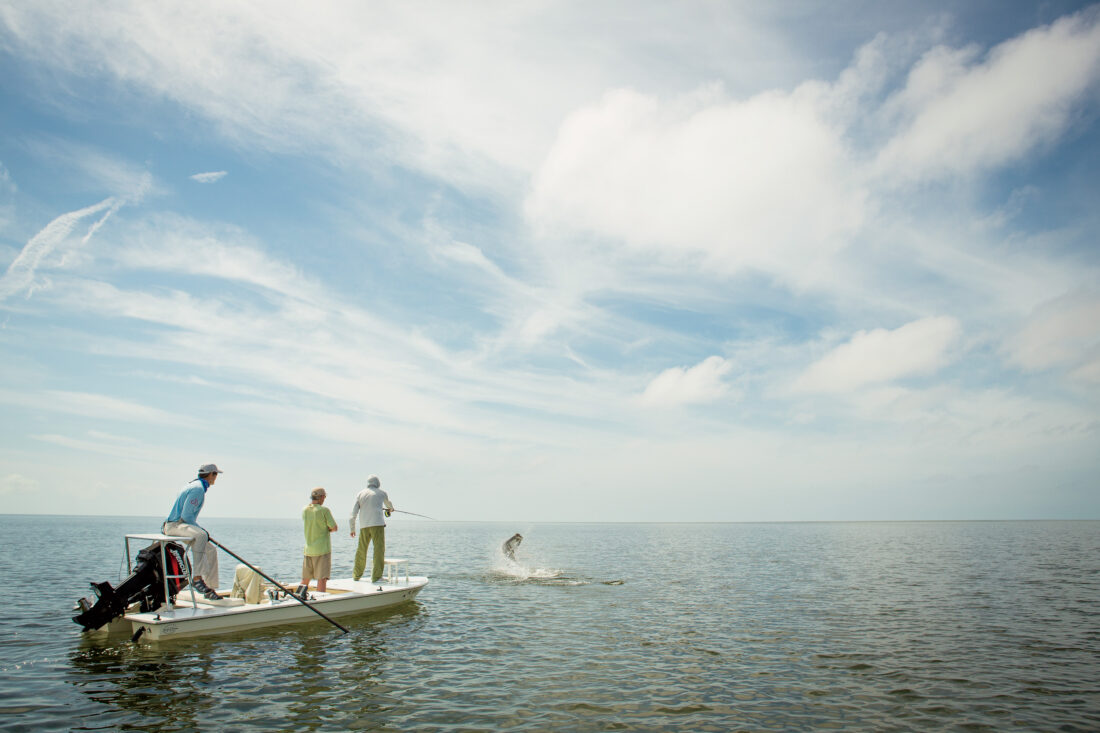There are tons of good reasons to hire a fishing guide. A) You have no idea what you’re doing. B) You know your way around a fishing rod, but you’ll be in unfamiliar waters targeting new-to-you fish. C) You want to try a style of fishing that requires knowledge and gear—a poling skiff, a drift boat—that you simply can’t find in your garage, no matter how much you look.
Even experienced anglers turn to guides to help develop new skillsets and target fish they have neither the equipment nor the know-how to catch. But booking a guide isn’t always straightforward. Keep these seven tips in mind when you’re looking to call in a pro.
Do your research.
If you don’t have a recommendation from someone who’s used a guide you’re considering, try to get one. Ryan Lambert also suggests you spend a little time on the guide or outfitter’s website and social media. The owner of Cajun Fishing Adventures in Buras, Louisiana, and one of the most respected guides in the South, Lambert says there are clues to a tight operation that show up online. You can see how neat and orderly guides keep their boats, or whether the fishing equipment looks updated and in good condition. And posted photographs can reflect guides’ professionalism. If it’s summertime and all you see are people wearing long sleeves and coats, Lambert says, “then you might wonder whether they’re pulling your leg about what good guides they are.”
Not that all guides are active online, but no matter how much or how little you can find on the Internet, Lambert encourages anglers to talk to one or two of his current clients. “You think a guide is going to say, ‘I’m not worth a crap, but I want you to come fish with me?’” he says, laughing. Ask for a couple of references. If the guide balks, that tells you all you need to know.

Bring your best game.
While it’s true that hiring a guide will most likely tip the scales in your favor, it’s also true that fishing with a guide is a team sport. Your skill level needs to match your aspirations. In just about every fishing pursuit, it’s the client who has to close the deal with a fish. “Be honest with yourself,” says Blackwater Guide Co.’s Mark Cherney, a southwest Florida native who fishes the Everglades. “If you want to catch a hundred-pound tarpon on fly, we’re set up to maximize your chances. But there’s only one person with a rod in their hand, and they have to be able to take advantage of the opportunities. I always say that the stressful part is on the front of the boat, not the back.”
Whether you’re after trout, tarpon, redfish, or bass, ask your guide what you should prepare for, and practice. If you’ve only thrown a 4-weight or 5-weight rod but you dream of an Everglades tarpon on the line, then you need to spend some time with an 11-weight rod in your hand well before the moment of truth. “Otherwise, it’s like buying golf clubs and expecting to place on a PGA course,” Cherney says.
Tell the guide if you have specific goals in mind.
There’s a wide range of approaches to what exactly a day on the water entails. If you’re fishing out of a lodge, particularly, there may be less flexibility than working with an individual guide. Many lodge-based operations run around a mealtime schedule; if being back at the lodge for late afternoon cocktails is less important to you than hammering on the fish during the last hours of daylight, make sure you’re in with the right outfit.
And be aware that many guides operate on an eight-hour day, which is understandable. If you want your day to start at dawn, don’t necessarily expect the guide to be willing to fish till dark. They all have their own lives to live, too. The key is to communicate. “Articulate your desires,” Lambert says. “The guide is working for you. Don’t be rude about it, but talk to the guide if you have something particular in mind. They might tell you that you might not be as successful doing it your way, but it’s your day.”
Avoid the full moon. Or not.
If you’re fishing in saltwater, especially in a nearshore or inshore environment, tides can be a significant factor affecting your success. Often, a full moon and its large tidal swings will prompt spawning, which you might want to avoid. “If you’re after big bull reds,” Lambert cautions, “you don’t want to go on a full moon. Those big bulls know the deal—if you only have sex twice a year, everybody goes. Even largemouth bass can be on the bed.” Other tides to look out for are neap tides, which have the least amount of tidal difference between low and high tide.
For some angling, though, a big tidal swing is a bonus. On those particularly high “flood tides,” fishing for tailing redfish peaks. Your approach should simply be to talk it through with your guide. “A good guide will tell you all this,” Lambert says. “On a bad tide, they should tell you to come on if that’s the only time you can fish, but there are better times to plan a trip.”

Bring cash.
Electronic payment is making things easier all around, but for many guides, cash is still preferred. Surprisingly, Venmo isn’t the cure-all solution. “There are places in the Everglades where we don’t have the greatest cellphone reception,” Cherney says. He’s had situations where Venmo payments have timed out on the receiving end but show as paid on the sender’s account. That can lead to obvious frustration. And even Venmo charges nearly 2 percent for commercial transactions. That’s money out of the guide’s pocket.
What’s for lunch?
The answer can vary from whatever you packed yourself to a full-blown shore lunch with tables and chairs. Don’t assume. Saltwater guides, particularly, might not provide lunch. They will likely have water and a few sports drinks to keep clients hydrated. For some clients, a well-orchestrated waterside meal is a part of the experience. For others, scarfing down a gas station hot dog will do. Pin this down well beforehand. If you do bring your own meal, be aware of making a mess. Chips and cookies are crumb factories, which are a pain for guides to clean from a boat.
And realize that every minute spent eating will eat into your fishing time. “I’d rather you eat while we’re making a twenty-minute move rather than sitting around for a long lunch break,” Cherney says. “I know for a fact that fish sit back a hundred yards away and say, Hey, he’s eating a sandwich! The coast is clear, let’s go!
Keep a positive attitude.
“As much as a guide can do on a boat, the attitude the client shows up with can really dictate how the day goes,” Cherney says. In some cases, guides can work hard all day for one or two shots on fish. Guides know if you’re grumbling about a slow day. “Once one person gets frustrated, it’s contagious,” he says. You can be assured that the guide wants the wind to lay down and the fish to get hungry. It’s far better to play a support role by staying positive and encouraging the guide to realize you know the deal: fishing is fishing.
“I guarantee my clients, whether they believe it or not,” Cherney says, “that I want them to catch a fish even more than they do.”
Follow T. Edward Nickens on Instagram @enickens and find more Wild South columns here.








